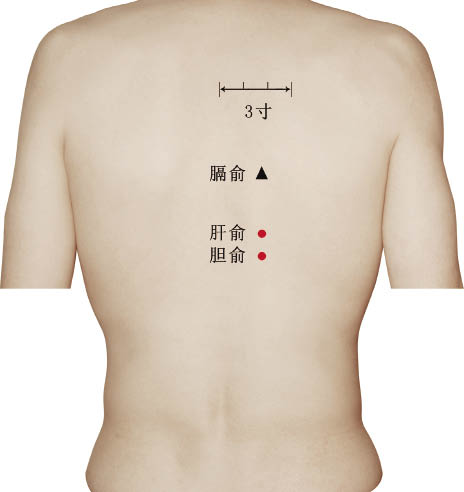Introduction To Acupoints
Liver Transporter
Acupoint Name:Liver Transporter Acupoint
Acupoint Code:BL-18
PinYin:ganshu
Associated Meridian:The Bladder channel of Foot, Greater Yang
Main Diseases for Treatment
1.Digestive system diseases: Acute and chronic hepatitis, cholecystitis, chronic gastritis, gastric dilatation, gastric spasm, jaundice; 2.Ophthalmology and otolaryngology system diseases: Ptosis, conjunctivitis, glaucoma, night blindness, retinitis, chloasma, freckles; 3.Nervous system and mental disorders: Migraine, neurasthenia, intercostal neuralgia, mental illness; 4.Surgical system diseases: Tuberculous lymphadenitis, gastric bleeding, intestinal bleeding, cholelithiasis; 5.Other conditions: Irregular menstruation, etc.
Acupoint Location
On the back, below the spinous process of the 9th thoracic vertebra, 1.5 cun lateral to the midline. (This acupoint is bilateral, one on each side.)
Acupoint Selection Techniques
Step 1: Lie prone or sit up straight; Step 2: Determine the lower angle of the scapula when the upper arm hangs naturally against the chest wall; Step 3: The intersection of the line connecting the lower angles of both scapulae with the posterior median line is at the 7th thoracic vertebra; Step 4: Push down vertically from the spinous process of the 7th thoracic vertebra for two vertebral spinous processes to reach the spinous process of the 9th thoracic vertebra; Step 5: There is a depression below the spinous process of the 9th thoracic vertebra, and 2 horizontal fingers lateral to this depression (place the index and middle fingers side by side, using the width of the middle finger's proximal interphalangeal joint as the standard for 1.5 cun) is the location of this acupoint.
Acupoint Chart

0 Comments
Please login first!
Cancel
Log In
Please login first!
Cancel
Log In